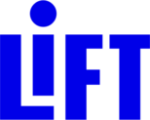“Our whole city is underwater right now but we are coming!”
-Derrick Freeman, Mayor of Port Arthur, Texas
I remember reading this chilling Facebook post by Mayor Freeman as I sat in my living room during the summer of 2017. I was half-paying attention to the local news report on dangerous fast-rising water in the city and half-listening to my mom coordinate a rescue for my grandparents, aunt, and baby cousins with the ‘Cajun Navy,’ a local group of community members with boats and rainboots. The county I call home was struck by the seemingly unending rains that accompanied Hurricane Harvey. Twenty-six inches of rain in 24 hours – for many, the results of which were devastating and irrecoverable losses. At this point, you may be struggling to understand how a disaster-stricken city in Southeast Texas and a national anti-poverty organization based in D.C. are related but, hopefully, an account of my experience will offer some clarity.
It is unnerving to go back and look at news footage and photos from the Hurricane and recovery, to recall the feelings of desperation that I and so many others in my community felt while trying to locate their loved ones. While the rain continued to pour, and water continued to rise, local community members began gearing up to make rescues. Initially, many of these rescues were between families and close neighbors. However, people quickly realized that official rescue services could not handle the high demand, so volunteer boat rescue crews began to form. Immediately after the rain stopped and water began to recede, volunteers made their way to makeshift shelters, asking what they could do to help. The tasks were not glamorous, and the sweltering Texas heat made the job even more difficult. People who were dealing with water damage in their own homes took breaks to drop off clothes and other donation items. I witnessed countless acts of selflessness in the service of complete strangers.
Through all of this, however, the most poignant act of heroism that I can think of was one that no one witnessed. About a half-mile from an abandoned vehicle, police discovered a toddler with a pink backpack floating on top of her mother’s body. When found, the little girl was hypothermic from being partially submerged in flood water but in stable condition. Her mother did not make it. Police say that the girl’s mother did everything she could to keep her daughter above the water for as long as possible. This heart wrenching story displays the lengths at which parents will go to protect their children. Although the circumstances may be different, if you lay bare the motivations for saving your child from a flood and doing whatever you can to access services to make a better life for your child through LIFT, you can see that parents and caregivers will do anything in their power to guarantee the well-being of their children.
As unnerving as it is to read the numerous other stories of sacrifice that occurred during Hurricane Harvey, reading about the millions of families that live in poverty every day is just as distressing. LIFT supports those who struggle to provide what any parent desires for their family: a safe, nurturing environment for their children and better prospects for their family’s future. By offering parents access to the resources they need, LIFT creates space for parents to reach their goals and create a better life for themselves and their families. Although LIFT coaches and members of the ‘Cajun Navy’ clearly have different immediate goals, they are ultimately guided by the same motivations and touch peoples’ lives in critical ways.
Over a quarter of the population of the city of Port Arthur, Texas lives in poverty. While it is true that natural disasters do not discriminate based on class or wealth, socioeconomic status does play a serious role when it comes to vulnerability to storms and recovery time. Poverty is a systemic issue that is passed from generation to generation. When LIFT works to empower families to break this cycle of intergenerational poverty, they create a culture of service that offers agency to its members and model a system that can positively influence the social service agencies that serve people across the country. While LIFT’s work on the ground changes the lives of members they touch, their overall mission has widespread implications for people they may never meet, perhaps even people living in poverty, susceptible to life-altering natural disasters, on the Gulf Coast of Texas.
I always knew that service to others was the path for me, both personally and professionally, but it was never so clear as it was during the immediate aftermath of Hurricane Harvey. So, when asked Why I LIFT, I think of my own, and all the other, families floating on a boat away from their home and belongings, being rescued by complete strangers. I think of LIFT coaches sitting with parents, building relationships that will lead to better outcomes for their families. When all the details of the two circumstances are stripped away, we are left with the same phenomenon: people uplifting each other. I see these relationships, and I remember that, despite everything else, it is our duty to lift each other up with the love, care, and respect that characterizes a family.
This blog post was written by Courtney Marsh, a 2018 summer intern at LIFT’s national office.
